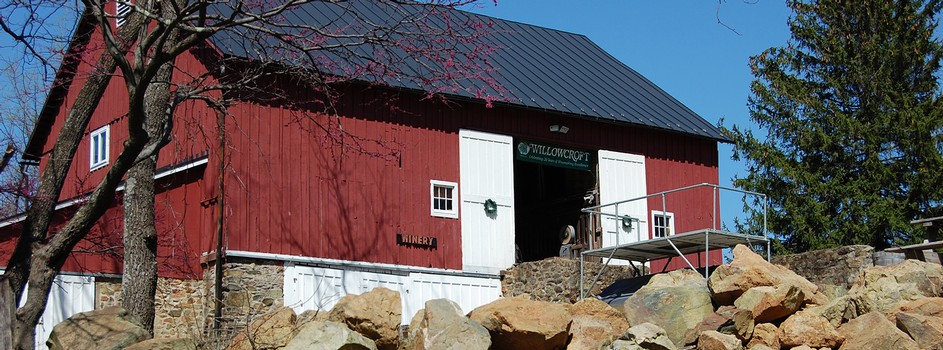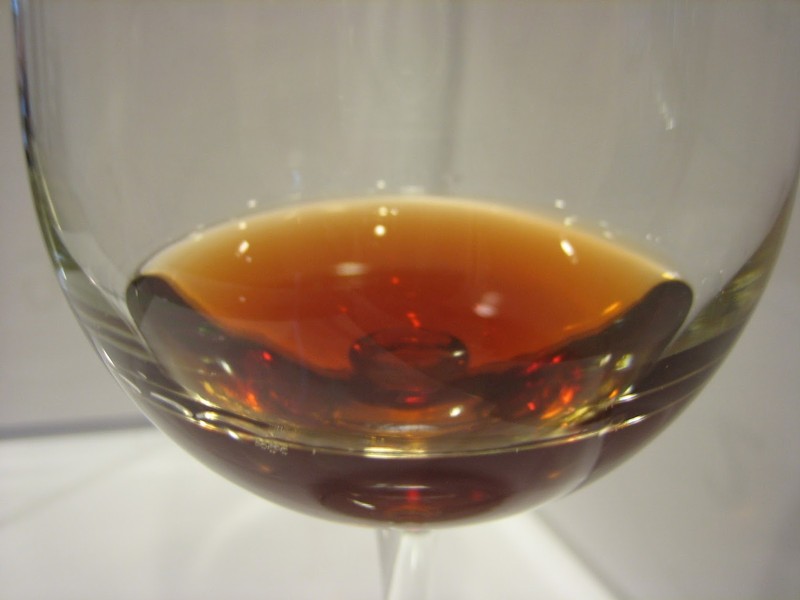News
Welcome to the Willowcroft blog! This is where we will be highlighting events and news from around the winery.
Why Your Favorite Wine Tastes Different Every Time
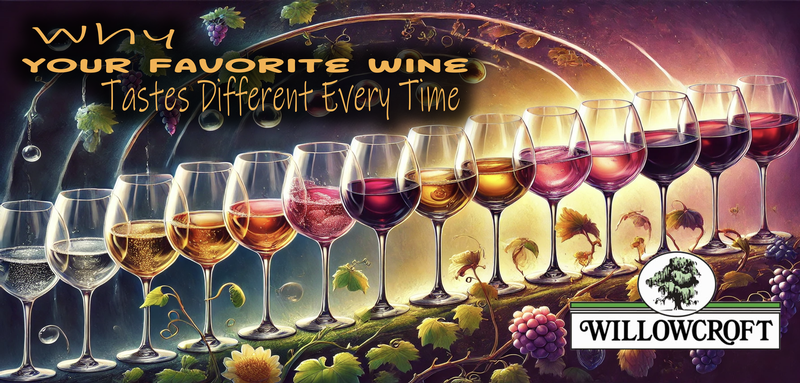
Have you ever brought home a bottle of wine you adored at a tasting, only to feel slightly disappointed when you uncorked it later? Or perhaps you’ve ordered a favorite wine at a restaurant and found it didn’t quite match the experience you remembered. If you’ve noticed that each glass tastes a bit different each time, you’re not alone — and there’s a fascinating reason for it. Wine is a living, evolving product; many factors can influence how it tastes from one experience to the next. Here’s why that special bottle may seem to change on you.
1. Wine is Always Evolving
Wine is a living organism, and even after bottling, it continues to develop and change. Wines naturally contain microscopic compounds that react to oxygen, temperature, and time, subtly shifting the aromas and flavors. As the wine ages, its character may soften, become more complex, or, sometimes, lose some of its freshness. This is especially true for younger wines, which may taste slightly different even a few months after bottling.
2. Serving Temperature Matters
The temperature at which you serve wine can make a huge difference in how it tastes. A chilled white wine reveals crisp, acidic notes, while warmer temperatures can enhance its sweetness and fruitiness. Red wines served too warm can taste flabby or overly alcoholic, while reds served too cold may seem muted. If you’ve enjoyed a wine at a certain temperature in the past, drinking it at a different temperature now could be why it doesn’t taste quite the same. To get the best experience, aim to serve whites between 45-55°F and reds around 60-65°F.
3. The Environment Changes the Experience
Where and with whom you enjoy your wine can significantly impact how it tastes. Drinking wine at a beautiful vineyard surrounded by friends or in a romantic setting can add layers of enjoyment to the experience, creating fond memories that influence how you perceive the taste. Recreating that exact setting and atmosphere at home or in a different location may be nearly impossible, which is why the wine may not feel quite as magical.
4. Storage and Transportation Make a Difference
Wine is sensitive to temperature fluctuations and exposure to light, which can affect its flavor profile. If your bottle was exposed to heat, light, or rapid temperature changes during transportation or storage, it may taste different. Ideally, wine should be stored in a cool, dark place, lying on its side if corked, to keep it in optimal condition. If your wine was mishandled along the way, it may not live up to the memories of your previous experience with it.
5. Your Palate Changes Over Time
Believe it or not, your own palate can change, even day to day. Factors like what you’ve eaten, recent illness, or simply evolving tastes can affect how you perceive the flavors in wine. For example, if you’re tasting wine after a spicy meal, you may find it harder to pick up subtle notes. Similarly, if you’ve been ill or taken medication, your taste buds may temporarily react differently. Over time, your palate may also develop, making you more sensitive to certain flavors and less interested in others.
6. Flawed or “Corked” Bottles
Sometimes, the reason for a wine’s off taste is due to flaws in the bottle. Wine can become “corked,” meaning it has been affected by TCA (trichloroanisole), which gives it a musty, unpleasant aroma and taste. Corked bottles are estimated to affect a small percentage of wines with natural corks, so it’s not a common issue but worth noting. Other flaws, like oxidation (when a wine is overexposed to air) or lightstrike (damage caused by UV exposure), can also compromise a wine’s quality.
Bringing It All Together
Whether you’re sipping a favorite wine at home or enjoying a new vintage at a vineyard, remember that wine is not a static product—it’s an evolving experience shaped by the environment, storage conditions, and your own palate. The next time your favorite wine tastes a bit different, consider these factors as part of the journey. Each glass, each bottle, and each experience with wine is unique, which is all part of the magic. Embrace the differences and keep exploring!
5 Things You Should Know About Wine
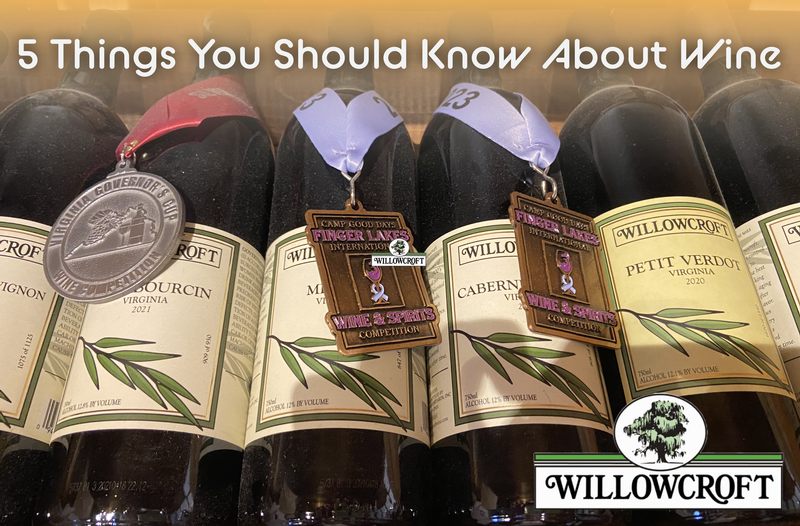
Wine is a world of flavors, nuances, and experiences, and diving into it can be as straightforward or as intricate as you’d like. Here are five things every wine lover should know to help make the journey both enjoyable and enlightening.
1. Flavors in Wine Are Natural, Not Added
Have you ever read tasting notes and wondered how wine can have flavors like dark cherry, black tea, or currant? Understanding that these flavors aren’t added but naturally present due to the complex winemaking process is essential. Wine can adopt subtle notes from fruits, spices, and even earthy flavors like mushrooms. The result is a natural profile that can mimic anything from berries to pepper, honey, or citrus. This complexity makes wine tasting an adventure, as you’re not just drinking grape juice—you’re experiencing layers of natural flavor.
2. The Best Pairings Are Found Through Experimentation
Finding the perfect wine pairing is as much about experimentation as it is about guidelines. Light-bodied wines like Sauvignon Blanc pair well with light dishes like chicken or seafood, while full-bodied wines like Cabernet Sauvignon are an excellent match for richer dishes, such as steak. However, regional influences and the wine’s unique characteristics make each bottle different. A Cabernet from Napa will taste distinct from one produced in Chile or France, so sampling and experimenting with different pairings is the best way to discover what you love. Don’t be afraid to try new combinations—your palate is the ultimate guide!
3. Aging Doesn’t Always Guarantee Better Quality
There’s a common belief that aged wines are superior, but this isn’t always true. While some red wines benefit from 10+ years of aging, not all are meant to be cellared. White wines, for example, often reach peak flavor within a few years, as extended aging can cause them to lose their vibrant taste. Aging can soften tannins in red wines, revealing more complex flavors, but the results vary by wine. When in doubt, consult winery staff or experts to determine if a wine is age-worthy or best enjoyed young.
4. Most Wines Are Blended With Other Grape Varieties
If you buy a wine labeled as a specific varietal, like Pinot Grigio or Riesling, that means the majority of the grapes used belong to the named grape. In the U.S., at least 75% of the grapes must come from that varietal, with some regions in California requiring as much as 85%. However, it’s common for winemakers to blend in small amounts of other grape varieties to enhance the wine’s flavor, structure, or balance. These subtle adjustments add depth, allowing winemakers to create a more unique and harmonious wine.
5. There’s No “Right” or “Wrong” in Wine
Wine is ultimately a personal experience. A wine that one person finds exceptional might not appeal to someone else. Renowned critics and ratings can guide you to high-quality wines and regional authenticity, but they don’t dictate what you’ll enjoy. Everyone’s palate is unique, and the best wine is the one that brings you the most pleasure. So, trust your tastes, explore freely, and remember there’s no “right” or “wrong” in wine.
These five insights should enhance your wine journey, encouraging you to explore and discover what you truly enjoy. Cheers to finding new favorites and embracing the diversity that wine offers! 🍷
The History of Willowcroft Farm Vineyards: A Legacy Rooted in Loudoun County’s Rich Past
Willowcroft Farm Vineyards, nestled on the scenic Catoctin Mountains in Loudoun County, Virginia, is more than just a winery—it’s a living piece of history. With a residence dating back to 1789, the vineyard spans 30 acres and offers breathtaking views of the Loudoun Valley and Blue Ridge Mountains. This land, rich in history, has been home to many notable figures and families, shaping it into the cornerstone of Loudoun County's wine industry today.
In its early days, the property was owned by Lord Fairfax and later by James Simpson, with William Jenkins managing the farm before purchasing it in 1877. The Jenkins family played a significant role in the farm’s history, passing it down through generations. Over the decades, the property changed hands numerous times, moving through families like the Tiffanys, Pangles, Garretts, and Kohlmeiers, each leaving their mark.
One of the most compelling stories tied to the land is that of Jane Pohl, daughter of West Point graduate Colonel Hermann Pohl, who purchased the farm in 1946. Jane Pohl was an accomplished equestrian who defied expectations with her horse Fitzrada, a once temperamental cavalry horse. Jane’s success with Fitzrada, despite their rocky start, led to significant achievements in the show-jumping world, helping to open the doors for women to compete internationally in the sport.
In 1979, Lew Parker purchased the land and established Willowcroft Farm Vineyards, planting the seeds for what would become Loudoun County’s first winery. Willowcroft’s creation marked the resurgence of the region's post-Civil War spirits industry, which had fallen dormant during Prohibition. Today, Willowcroft is a testament to the land’s deep agricultural roots and the pioneering spirit of Virginia’s winemaking industry.
With each glass of wine, visitors can taste not only the flavors of Virginia but also a legacy that spans centuries, from the Jenkins family to Jane Pohl’s equestrian triumphs and finally to the establishment of Loudoun’s first winery.
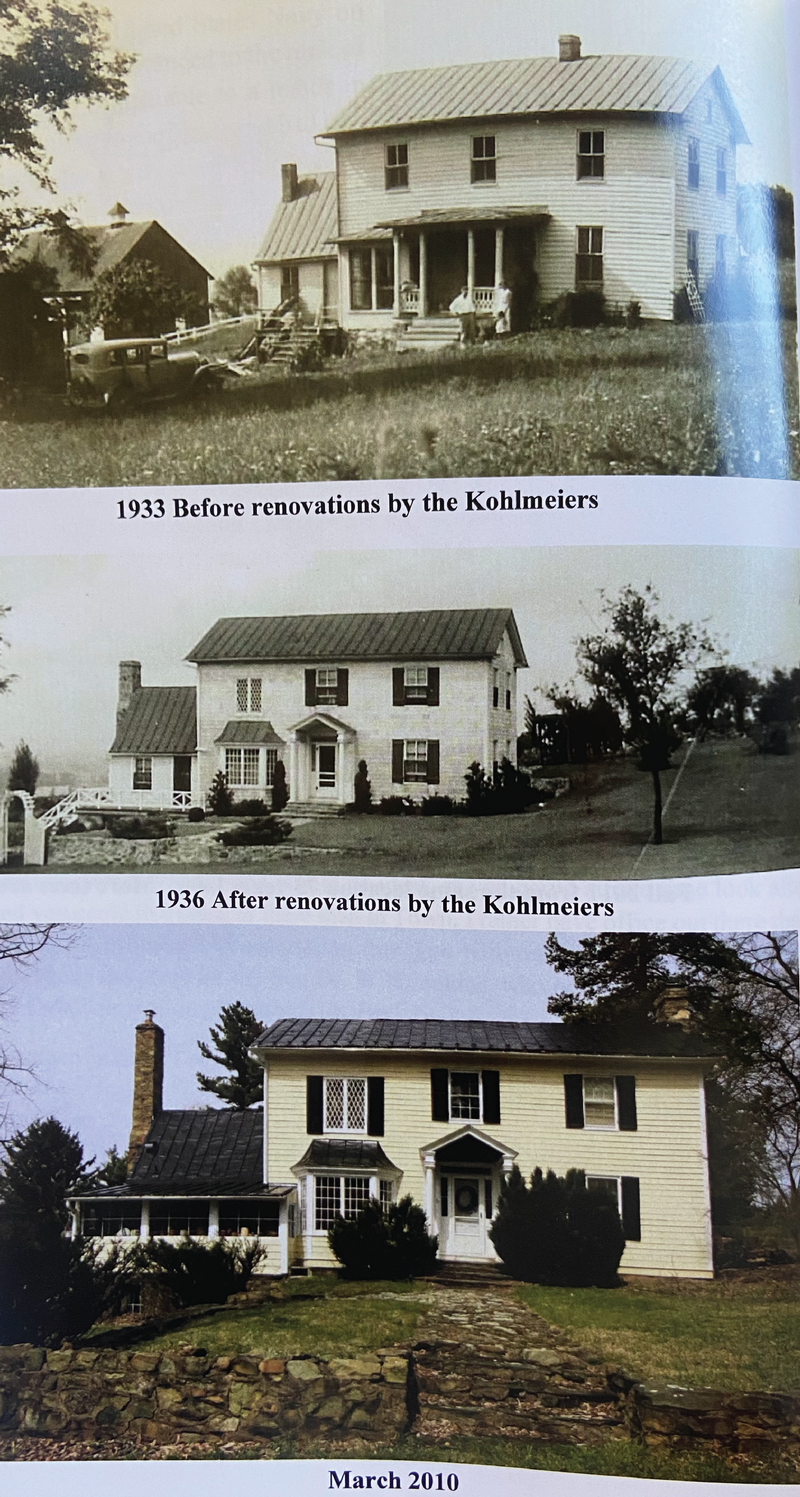
Fall Wine Pairing Tips with Willowcroft Wines
 With the arrival of fall, cozy up with wines that pair beautifully with hearty meals and the rich flavors of the season. Willowcroft’s collection offers ideal choices for warming dishes and gatherings with loved ones. Here’s a guide to pairing our wines with your favorite autumn meals:
With the arrival of fall, cozy up with wines that pair beautifully with hearty meals and the rich flavors of the season. Willowcroft’s collection offers ideal choices for warming dishes and gatherings with loved ones. Here’s a guide to pairing our wines with your favorite autumn meals:
1. Choose a Fuller-Bodied Red for Hearty Dishes
Fall is the season for rich, comforting meals—think braised short ribs, roasts, and lamb. Willowcroft’s Chambourcin is a standout with these flavors, especially with dishes like pork chops with applesauce, braised short ribs, or lamb. Its lush berry and spice notes complement the depth of these savory dishes, adding warmth to every bite.
2. Pair Wine with Cheese
A well-paired cheese board can elevate any fall gathering. Willowcroft’s Chardonnay Reserve is fantastic with creamy cheeses like Brie or Camembert, while the Cabernet Sauvignon enhances the flavors of stronger, semi-firm cheeses like Manchego or Gouda. These pairings bring out the rich, earthy flavors that make autumn so special.
3. Match the Wine to the Meal
Starting with a great wine and building your meal around it can bring out the best in both. Our Riesling shines with dishes that feature orchard fruits like apples or pears, adding a subtle sweetness that’s perfect for fall flavors. Or, pair the bright Albarino with roasted fall veggies for a crisp complement to earthy flavors.
4. Consider the Wine's Aromas
Fall wines often mirror the season’s scents with hints of spices and rich fruit. Willowcroft’s Merlot has a depth that pairs wonderfully with hearty game meats, venison, or roasts, while Chambourcin offers a versatile profile that enhances spiced and savory fall dishes.
Fall Wine Recommendations from Willowcroft
Here are some ideal Willowcroft wines for your fall menu:
- Cabernet Sauvignon – Perfect with roasted mushrooms, veggies, or Thanksgiving turkey.
- Chardonnay Reserve – Pairs wonderfully with creamy soups, buttery dishes, and pasta with creamy sauces.
- Riesling – Complements fall-inspired salads, pork dishes, or desserts featuring apples or pears.
- Chambourcin – Exceptional with pork chops and applesauce, braised short ribs, or lamb.
- Merlot – Bold enough to stand up to venison, duck, or hearty beef dishes.
Enjoy the flavors of fall with Willowcroft wines, adding warmth, richness, and a taste of Virginia to every meal. Cheers! 🍷
Creative Ways to Repurpose Your Wine Corks
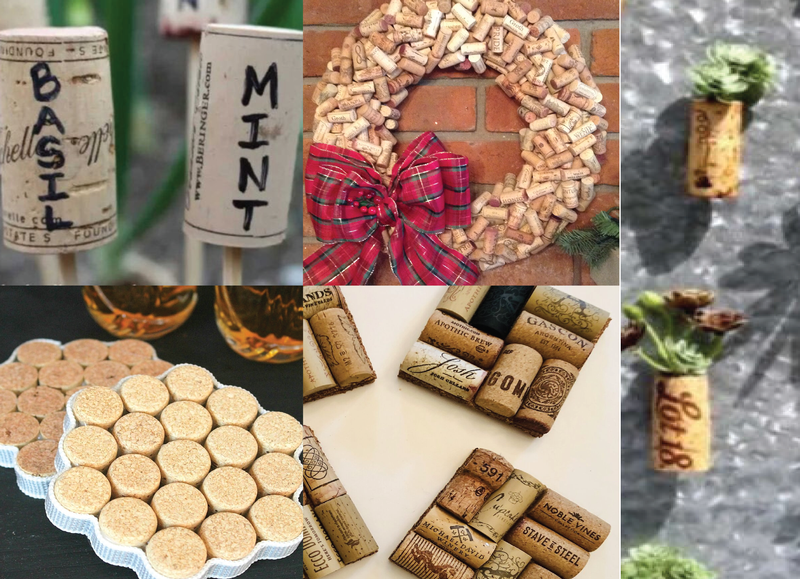 Around 13 billion wine corks are thrown away yearly, contributing to unnecessary waste. But instead of tossing them, why not repurpose them into fun, crafty projects? Here are a few simple ways to reuse those corks to bring charm and creativity to your home!
Around 13 billion wine corks are thrown away yearly, contributing to unnecessary waste. But instead of tossing them, why not repurpose them into fun, crafty projects? Here are a few simple ways to reuse those corks to bring charm and creativity to your home!
Plant Markers for the Garden
Wine corks make excellent plant markers, especially for labeling seedlings and herbs. This is an eco-friendly way to keep track of your garden while adding a unique, handmade touch to your plants.
- Simply write the name of the plant on the side of the cork using a permanent marker.
- Insert a bamboo skewer or sturdy wire into the cork and place it in the soil next to your plants.
Your garden will look more organized, and you’ll never forget which plant is which again!
Succulent Cork Magnets
Why not combine two popular projects—mini succulent planters and cork magnets? These adorable mini planters not only bring a pop of greenery into your home but also serve as stylish magnets for your fridge or any magnetic surface. Here's how to create your own:
- Hollow out the center of the cork using a small knife.
- Fill the hole with soil and plant a tiny succulent or air plant.
- Attach a magnet to the back of the cork using strong adhesive glue.
- Stick them on your fridge or other magnetic surfaces for a fun, green touch to your kitchen!
These succulent cork magnets are a quirky and eco-friendly way to use up those corks while adding a natural, decorative element to your home.
Cork Wreath
For a larger project that really makes a statement, a wine cork wreath is a beautiful addition to your home decor, especially if you're a wine lover! You’ll need a good collection of corks, but the results are worth it.
What You’ll Need
- 300-350 corks for a 17″ wreath (or 450-500 corks for a 21″ wreath)
- A 14″ or 18″ straw wreath (found at craft stores)
- String or thin ribbon to hang
- Hot glue gun and plenty of glue sticks
- Newspaper to protect your work surface
Steps
- Secure a piece of string or ribbon on your straw wreath for hanging.
- Begin by gluing corks end to end along the inner and outer rings of the wreath. Hold each in place for a few seconds to secure.
- Add 7-10 rows of corks, covering the viewable base. Use less decorative corks for the first layer, as they will be covered.
- For the final layer, glue the corks in a random pattern for a fuller, textured look.
- Let everything dry and hang your stunning cork wreath!
This project takes a bit of time, but the result is a unique, rustic wreath perfect for any wine enthusiast.
Cork Coasters and Placemats
Cork coasters and placemats are another fun way to reuse wine corks while adding a personal touch to your home. Not only are they practical, but they make great conversation pieces at your next dinner party.
- Collect enough corks for the number of coasters or placemats you'd like to make.
- Decide if you want to cut them into different shapes or leave them whole.
- Use a hot glue gun to arrange the corks into your desired shape—circular, square, or even hexagonal.
- Let them dry and enjoy your eco-friendly coasters!
Get Crafty with Corks!
Whether you're making succulent magnets, a decorative cork wreath, or functional coasters, there are endless ways to repurpose your wine corks and reduce waste. Plus, these projects are great for adding a personal, handcrafted touch to your home decor. Happy crafting!
How to Organize a Casual Wine Tasting Party at Home
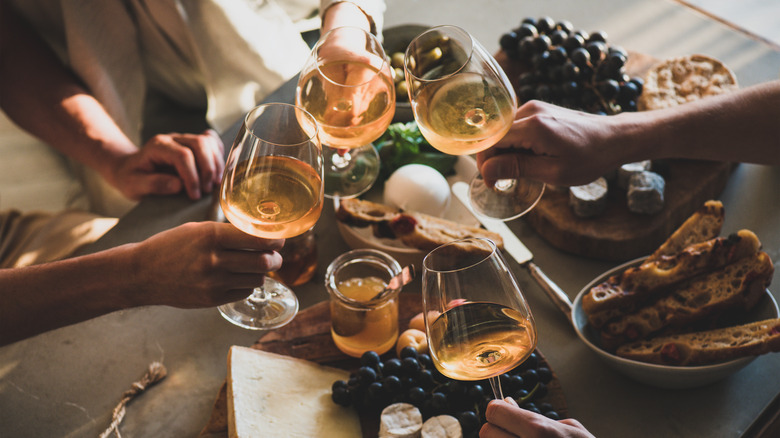 Hosting a wine-tasting party at home is a fun way to explore new wines, share great company, and learn more about your favorite bottles. With the proper preparation and a relaxed atmosphere, you’ll create a memorable event for your guests. Here’s what you’ll need to host a stress-free wine-tasting party that everyone will enjoy.
Hosting a wine-tasting party at home is a fun way to explore new wines, share great company, and learn more about your favorite bottles. With the proper preparation and a relaxed atmosphere, you’ll create a memorable event for your guests. Here’s what you’ll need to host a stress-free wine-tasting party that everyone will enjoy.
What You’ll Need to Get Started
- Wine: The star of the party! A standard bottle will provide about twelve 2-ounce tasting pours. To avoid palate fatigue, try not to sample more than six different wines. If you're keeping it simple, three different bottles can still offer enough variety to keep things interesting.
- Proper Glassware: If possible, use different glasses for each type of wine to enhance the aromas. But a classic white wine glass can work for all varieties if you're going for a casual vibe. Just rinse between tastings with water.
- Temperature Control: Keep an ice bucket or wine fridge handy to ensure that your wines are served at the optimal temperature. Keep sparkling and white wines chilled for 15 to 30 minutes before tasting.
- Corkscrew: Many bottles still use corks, so make sure you have a trusty corkscrew on hand for easy opening.
- Food & Utensils: Prepare some light bites to complement the wine. Cheese, charcuterie, and bread are great options. Make sure you have plates, utensils, and napkins for your guests.
- Discard Bucket & Water: Have a discard bucket available for any unfinished wine. Encourage your guests to stay hydrated by providing plenty of water for drinking and rinsing glasses.
- Pen & Paper: For an interactive experience, provide your guests with paper and pens to jot down tasting notes or participate in a wine quiz. This adds a fun, educational element to the evening.
Wine Tasting Tips
To make your event extra special, keep these tips in mind:
- Right-size Your Gathering: Aim for a group of six to 10 people. This keeps the party intimate, encourages conversation, and ensures you won’t need multiple bottles of each wine.
- Order of Tasting: Start with lighter wines and work toward the heavier options. A good progression might be sparkling, followed by light whites, full-bodied whites, rosés, light reds, and bold reds.
The 5 S’s of Wine Tasting: Follow the sommelier-approved method of tasting:
- See the color and clarity of the wine.
- Swirl to let it breathe and release aromas.
- Sniff to appreciate the scent.
- Sip and let the flavors linger on your palate.
- Savor as you think about the flavors and share your thoughts.
With these simple steps, you'll be ready to host a delightful wine-tasting party that combines fun, flavor, and a bit of wine knowledge. Cheers!
How to Properly Wash and Polish a Wine Glass
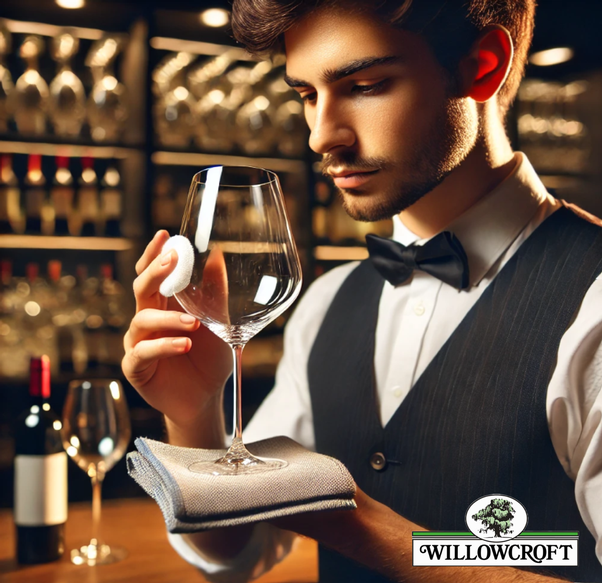
Wine lovers know that enjoying a great bottle is more than just the wine—it's also about the experience, including the glassware. Sophisticated, artisanal wine glasses have become more popular, but with that comes the need for proper care to keep them looking their best. The finest wine glasses, whether made of leaded or non-leaded crystal, are prone to cloudiness and stains if not handled correctly. Here's how to keep your wine glasses sparkling, stain-free, and ready for your next pour.
Step-by-Step Guide to Polishing Wine Glasses
- Rinse After Every Use: Always rinse your wine glasses after use to prevent wine residue from drying and staining. Hand wash your glasses using warm water, and when necessary, an odorless soap.
- Dry and Polish: Allow your stemware to air dry upside down on a rack. Once dry, polish them using a glass polishing cloth. Hold the glass by the bowl, not the stem, to avoid breakage. Wipe the interior and exterior of the bowl, and finish by polishing the stem and base.
- Avoid Fingerprints: To prevent fingerprints while polishing, use a second cloth to hold the glass. Make steady, gentle circular motions, clockwise if you’re right-handed and counterclockwise if you’re left-handed.
- Use Steam for Tough Stains: For more stubborn stains or cloudiness, steam can be effective. For cloudiness caused by detergent buildup or hard water, soak the glasses in a warm vinegar solution for about an hour. This will break through the residue and leave your glasses sparkling.
Removing Tough Stains and Cloudiness
If your glasses have been left with red wine stains or a cloudy film, distilled white vinegar is an excellent solution. Here's how to tackle both issues with one treatment:
- Warm the Vinegar: Heat distilled white vinegar by placing it in simmering water on the stovetop or microwave.
- Soak the Glasses: Pour the warmed vinegar directly into the glasses or submerge the glasses in a tub of warm vinegar for about an hour. This method is effective for both tough red wine stains and cloudy film caused by hard water or detergent.
- Scrub Gently: After soaking, gently scrub the stained or cloudy areas with a wine glass brush, or wrap a fork in a microfiber cloth to reach the bottom of the bowl. For persistent stains, add a teaspoon of baking soda to the vinegar and let the fizzing reaction help loosen the debris.
- Rinse and Polish: Rinse the glasses thoroughly and polish them with a glass cloth to restore their shine.
Tips to Keep Glasses Crystal-Clean Longer
- Always hand wash your glasses as soon as possible after use.
- Use less detergent to avoid sticky residue.
- Rinse with warm water to keep glasses shiny.
- Consider doing a vinegar soak at least once a year to maintain clarity.
By taking care of your wine glasses properly, you can ensure they stay as beautiful as the day you got them, enhancing every wine experience.
How to Become a Wine Expert: A Beginner’s Guide
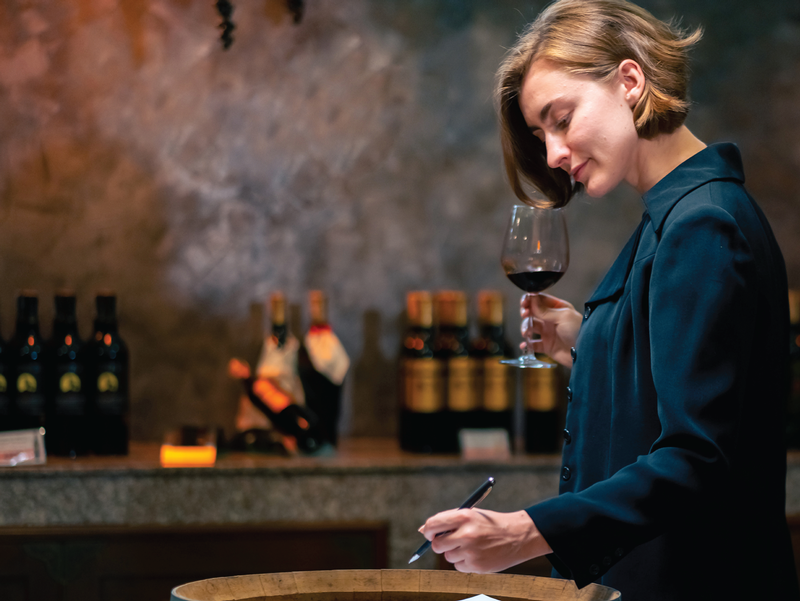 Becoming a wine expert is a rewarding journey if you’re passionate about wine and eager to elevate your knowledge. While some wine enthusiasts formally become certified sommeliers, others deepen their understanding of wine through experience and exploration. Whether you’re aiming to be a casual connoisseur or an oenophile, these steps will help you get started.
Becoming a wine expert is a rewarding journey if you’re passionate about wine and eager to elevate your knowledge. While some wine enthusiasts formally become certified sommeliers, others deepen their understanding of wine through experience and exploration. Whether you’re aiming to be a casual connoisseur or an oenophile, these steps will help you get started.
- Build a Solid Knowledge Base
To truly appreciate wine, it’s crucial to understand the basics. Learn about different wine styles, grape varieties, and wine regions. Familiarizing yourself with these elements will give you the foundation to fully identify and enjoy wines. Master the 4 S’s of wine tasting (See, Swirl, Smell, Sip, Savor) to sharpen your ability to evaluate each glass. This process helps you appreciate the subtle differences in color, aroma, flavor, and texture that distinguish one wine.
For a deeper dive into understanding tannins, acidity, terroir, and wine body, check out our other blog posts on these topics. They’ll guide you through key wine characteristics that can transform your wine-tasting experience.
- Evolve Your Wine Taste
One of the best ways to become a wine expert is by tasting wines from a variety of regions and styles. Expanding your palate allows you to distinguish between Old World and New World wines, as well as between young and aged wines. Each wine carries a unique story shaped by its region, terroir, and production methods. Visiting local wineries or participating in organized wine tastings are great ways to explore the diverse world of wine and discover new favorites.
- Develop Your Palate
Wine tastings are essential to developing your palate. Attend tastings, visit local wine shops, or organize your own wine-tasting sessions at home. The more wines you try, the better you’ll identify subtle flavors, aromas, and textures. Blind tastings are a great way to challenge your knowledge and expand your ability to recognize complex profiles. To elevate your tasting experience, explore topics like choosing the right wine glass and perfect serving temperatures in our other blog posts.
- Level Up with Certification (Optional)
If you’re looking to make a career out of your wine expertise, obtaining a sommelier certification is a great option. Certified sommeliers possess in-depth knowledge of wine and food pairings, wine service, and winemaking regions, making them invaluable in restaurants and the hospitality industry. While certification isn’t required to be a wine expert, it’s a great way to formalize your knowledge and enhance your professional credibility.
For those more interested in expanding their personal enjoyment of wine, you can still benefit from taking online wine courses, attending wine education events, or reading wine-focused books and blogs. These resources will help you learn about food and wine pairings, the science behind wine, and much more.
Final Thoughts
Becoming a wine expert is as much about passion as it is about practice. By continually exploring new wines, attending wine events, and educating yourself on the finer details, you’ll develop a refined palate and a deeper appreciation for this timeless beverage. Whether you’re pursuing formal certification or just seeking to enhance your personal knowledge, every glass of wine is a new opportunity to learn and enjoy. Cheers to your journey toward wine expertise! 🍷
How to Distinguish Aged Wine from New Wine
Wine evolves as it ages, and whether you're a casual drinker or a seasoned enthusiast, understanding the differences between aged and new wines can enhance your wine-tasting experience. Here are some key ways to tell the difference:
Color
One of the easiest ways to spot the age of a wine is by its color. Red wines darken to a brick-red or brown hue as they age, while white wines go from pale yellow or greenish tones to deeper golden shades. You’ll see more vibrant and bright colors in younger wines, while older wines tend to have a more muted and tawny appearance.
Tannins
In new red wines, tannins give astringency and structure. As wine ages, tannins bind together, forming sediment at the bottom of the bottle. This sediment means the wine will taste smoother and less astringent. A new wine will feel more tannic and dry, while an aged wine will offer a rounder, more mellow mouthfeel.
Aroma and Flavor
Young wines burst with primary flavors such as fruit, citrus, or floral notes. These youthful aromas give way to more complex, tertiary flavors like leather, spice, or earthy tones with age. In older wines, you'll notice layers of flavor such as mushroom, truffle, or honey that emerge through aging, giving the wine a richer, more developed character.
Acidity
Young wines have a more vibrant acidity, giving them a fresh and crisp quality. In aged wines, this acidity softens, allowing other flavors to take center stage. If you prefer a sharp and refreshing wine, newer bottles might be for you. For a more mellow and harmonious taste, opt for an aged wine.
Body and Alcohol
The body and alcohol content also provide clues. Old World wines from regions like France or Italy tend to have a lighter body and lower alcohol. New World wines—from areas like California or Australia—are typically fuller-bodied with higher alcohol content. The aging process further softens the body, making older wines smoother than the often bolder, more robust young wines.
Minerality vs. Fruitiness
Old World wines often display more minerality, while New World wines highlight fruit-forward characteristics. As wines age, these fresh fruit notes recede, and more nuanced, earthy flavors take over.
Serving Differences
Serving new and aged wines correctly enhances the experience. Young wines are best enjoyed immediately after opening to capture their freshness. Aged wines, however, benefit from a short time in the air to "open up" and reveal their full complexity. This process, called decanting, helps vintage wines develop a richer bouquet and deeper flavors.
Texture and Mouthfeel
Texture is another way to distinguish between aged and new wine. Older whites become more viscous and oily, while reds grow smoother and softer over time. In contrast, younger wines tend to feel fresher and more vibrant on the palate.
Conclusion
While both new and aged wines offer unique tasting experiences, understanding these differences will help you appreciate them even more. Whether you enjoy the bold fruitiness of a young wine or the nuanced complexity of an older vintage, there’s always something new to discover in the world of wine. Cheers to the journey! 🍷
How to Mix Another Drink with Wine: Elevate Your Wine Cocktails at Home
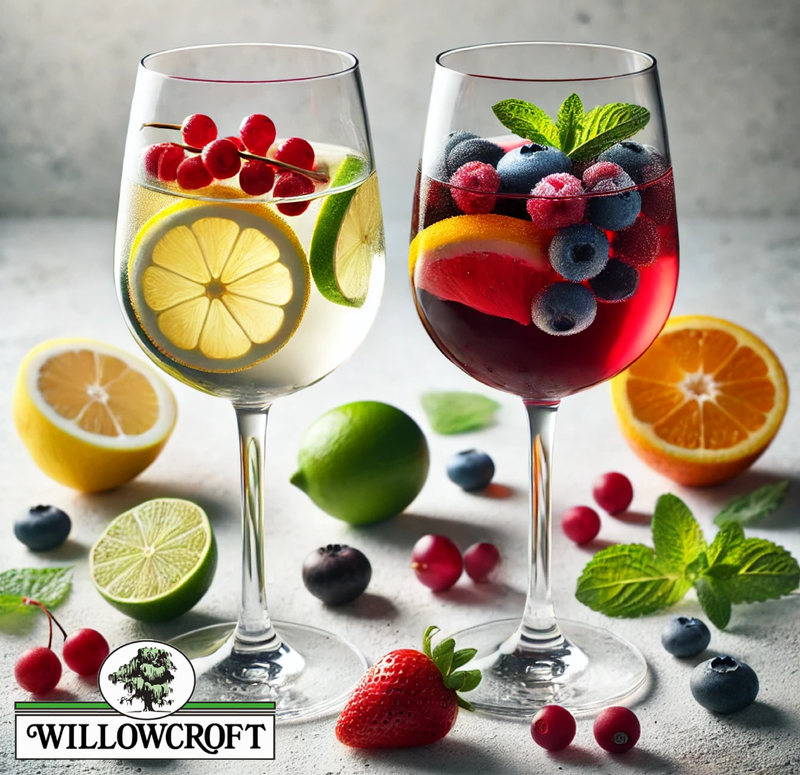 Whether white, red, sparkling, or still, wine makes an excellent base for crafting flavor-packed, low-alcohol cocktails that are perfect for gatherings. While we often enjoy wine cocktails like sangria, mimosas, and spritzes at our favorite bars, why not bring that same creativity into your home? Let's explore some fun ways to mix wine with other ingredients to create refreshing and delicious drinks for your next get-together.
Whether white, red, sparkling, or still, wine makes an excellent base for crafting flavor-packed, low-alcohol cocktails that are perfect for gatherings. While we often enjoy wine cocktails like sangria, mimosas, and spritzes at our favorite bars, why not bring that same creativity into your home? Let's explore some fun ways to mix wine with other ingredients to create refreshing and delicious drinks for your next get-together.
Red Wine Cocktails
One of the most famous wine cocktails is sangria, and for good reason. It’s versatile, easy to make, and perfect for a crowd. First, mix red wine with juices from oranges and limes and garnish with a medley of fresh fruits like oranges, berries, and apples. Add condensed milk or sweetened cream for a creamy twist—this creates a rich texture that pairs wonderfully with the fruit flavors. Want an extra kick? A splash of dark rum or brandy will do the trick! Before serving, you can also top off your sangria with club soda or sparkling wine to give it a little fizz.
White Wine Cocktails
White wine is the perfect canvas for light, refreshing cocktails, and plenty of ingredients mix well with it. Fresh fruits like strawberries, peaches, and citrus add natural sweetness and brightness. For an herbaceous twist, try adding mint, basil, or ginger. Sweeteners like honey, agave nectar, or a simple syrup will balance out the wine's acidity.
For added effervescence, mix white wine with soda water or sparkling wine. A classic spritzer with a fruity Pinot Grigio, soda water, and a squeeze of lemon or lime is a refreshing option for hot summer days. It’s a simple way to lighten the wine while keeping all the flavor intact.
Tinto de Verano: A Summer Favorite
If you’re looking for a quick and easy red wine cocktail, try Tinto de Verano, a beloved drink in Spain. This simple yet satisfying cocktail combines equal parts red wine and lemonade or lemon-lime soda. It’s similar to sangria but with fewer ingredients and a lighter taste. Perfect for a casual summer afternoon!
Wine and Fruit Juices
For something a little different, mix pineapple juice with a glass of white wine for a tropical twist. This refreshing combination creates a cocktail reminiscent of a classic rum drink but with a lighter body and lower alcohol content of wine. Sweeter white wines, like Riesling or Moscato, work particularly well with fruit juices, offering a harmonious balance between acidity and sweetness.
Final Tips for Perfect Wine Cocktails
- Freshness is Key: Use fresh fruits and herbs for the best flavors.
- Choose the Right Wine: For red wine cocktails, opt for something fruity and low in tannins, like Merlot or Zinfandel. For white wine, go for a light and crisp variety, such as Sauvignon Blanc or Pinot Grigio.
- Experiment: Don’t be afraid to try new combinations. Wine cocktails are all about playing with flavors to create something uniquely your own.
So, the next time you host a gathering, surprise your guests with a custom wine cocktail. It’s a fun and easy way to elevate your wine experience and keep things light, fresh, and festive!

